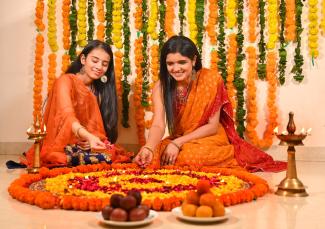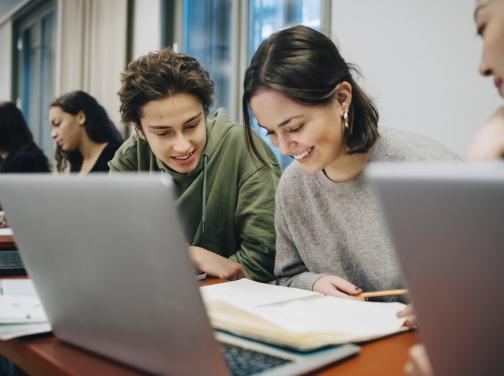
Instructions
Do the preparation task first. Then read the article and do the exercises to check your understanding.
Diwali is one of the biggest events in the Hindu calendar. It's celebrated by millions of people, not just in India but in many other countries across the world. The Diwali festival is also celebrated by Sikhs, Jains and Newari Buddhists.
When is Diwali?
Diwali lasts for five days and is celebrated in October or November. The exact date changes every year. The main celebration happens on the day of the new moon, when the sky is at its darkest. The new moon marks a new beginning, and for many people it symbolises joy, love, knowledge and hope.
What happens during Diwali?
Diwali comes from the Sanskrit word deepavali, which means 'rows of lighted lamps'. During the festival, homes, shops and streets are decorated with small oil lamps called diyas. They symbolise the victory of light over darkness, or good over evil.
For Diwali, people make rangoli to welcome the gods into their homes and to bring good luck. Rangoli are colourful patterns that are made on the floor out of coloured powder, rice and flowers.
People clean and decorate their homes for Diwali, ready to welcome in Lakshmi, the Goddess of Wealth and Prosperity.
Different things happen on each of the five days of Diwali.
Day one – Dhanteras, or Day of Fortune
The first day is the Day of Fortune, meaning both good luck and money or valuables. It is a lucky day for buying gold and silver and other metals, so people often buy jewellery or cars, or anything made of metal.
Day two – Naraka Chaturdashi
According to Hindu stories, the demon Narakasura was killed on this day. The day is all about getting rid of anything bad. People get up early and wash and put on clean or new clothes.
Afterwards, they celebrate by having a special breakfast with their friends and family. This is a day for visiting friends and relatives and for exchanging gifts.
Day three – Diwali
This is the most important day of the festival, and in many regions it's the last day of the year. People pray to the goddess Lakshmi to bring peace and good fortune to their homes.
The story goes that on this day Lord Rama rescued his wife, Sita, from the demon Ravana. Candles are lit to celebrate his victory and to light his way home after the battle. In the evening, there are often fireworks.
Day four – Annakut
Annakut means 'mountain of food'. Hindus prepare a lot of food and take it to the temple to celebrate the beginning of the new year.
Food is important throughout the period of Diwali, especially traditional sweet treats such as gulab jamun (a very sweet, deep-fried doughnut), kheer (a creamy dessert made with rice) or barfi (a sweet made with condensed milk and sugar).
Day five – Bhai Dhooj
This is the last day of Diwali, and it also sometimes celebrates the relationship between brother and sister. Brothers often visit their married sisters' homes, and they bring them gifts.
A universal festival
Diwali is celebrated by millions of people in India and across the world. The festival marks different historical events and stories for each religion that celebrates it. But for everyone it symbolises the victory of good over evil, and light over darkness. Diwali is a time for good and happy things, and it's a beautiful, colourful festival of lights. Happy Diwali!
Do people celebrate Diwali where you live? Do you have any other celebrations with lights and fireworks?

Comments